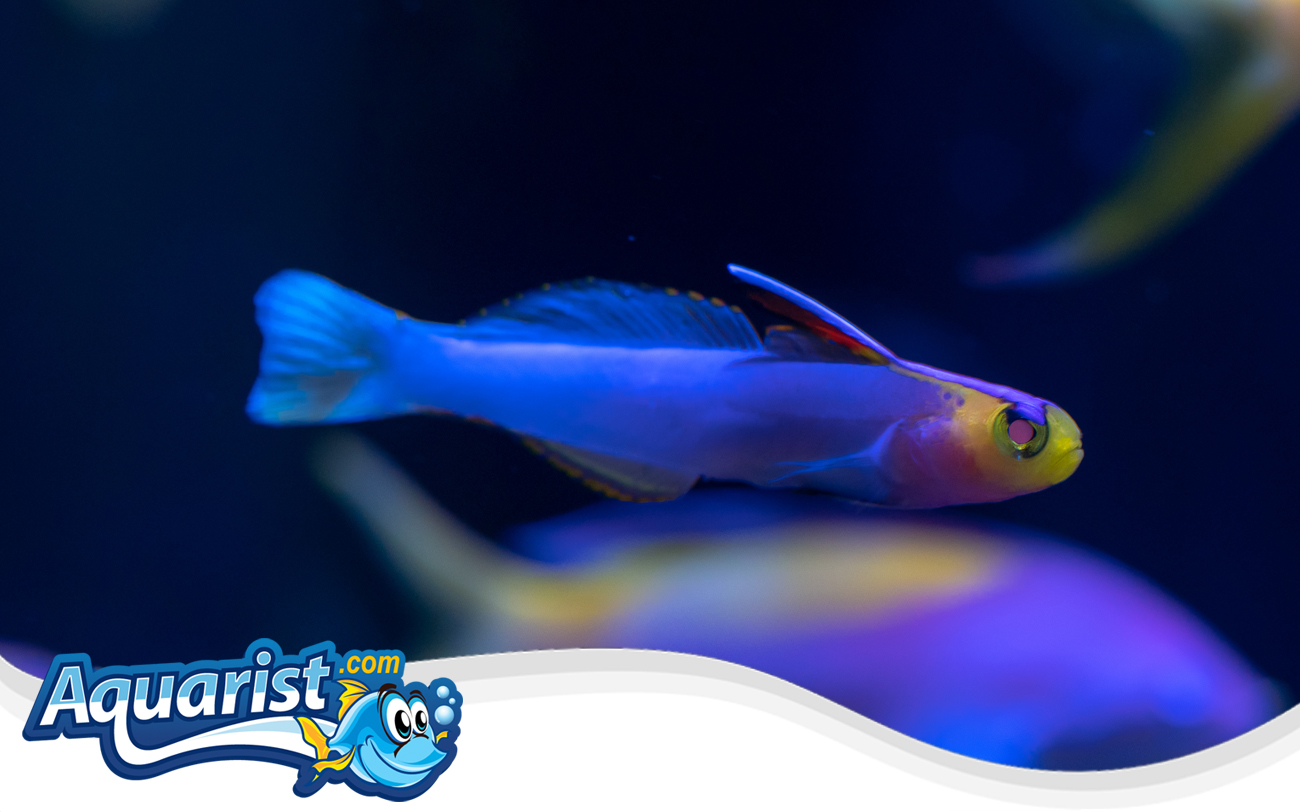Overview
- Found in deeper reef environments of the Indo-Pacific, often near sandy slopes and rubble zones.
- Easily recognized by its striking coloration, blending soft purples, yellows, and blues.
- A shy and cautious species, frequently retreating to burrows when startled.
- Often seen hovering just above the substrate, using its elongated dorsal fin to signal movement.
Feeding
- Planktivorous, primarily consuming tiny floating organisms and copepods.
- Readily accepts small live and frozen foods such as cyclops, mysis shrimp, and finely chopped seafood.
- Multiple feedings throughout the day help maintain energy levels and encourage natural foraging.
- A diet rich in marine-based proteins and supplements enhances coloration and health.
Habitat
- Prefers low-light reef environments with sandy or rubble-based hiding spots.
- Requires rock crevices or small caves to provide security and minimize stress.
- Moderate water flow helps replicate natural conditions without overwhelming the fish.
- Thrives in peaceful settings with minimal aggression from tank mates.
Fish Care
- Optimal water temperature: 75-82°F (24-28°C).
- pH level: 8.1-8.4, with a specific gravity of 1.023-1.026.
- Stable water quality is essential to reduce stress and maintain long-term health.
- Requires clean, well-filtered water with minimal fluctuations in parameters.
Compatibility
- Extremely peaceful, making it ideal for reef aquariums with small, non-aggressive tank mates.
- Can coexist with other firefish and gobies when housed in a well-structured environment.
- Should not be kept with boisterous or aggressive species that may cause stress.
- Does well in pairs or small groups if introduced properly.
Aquarium Behavior
- Often seen hovering in the mid-water column, scanning for food.
- Retreats quickly to its hiding spot if it senses danger.
- Becomes more active and social in a calm, well-established aquarium.
- Displays unique fin movements when interacting with its surroundings or tank mates.


